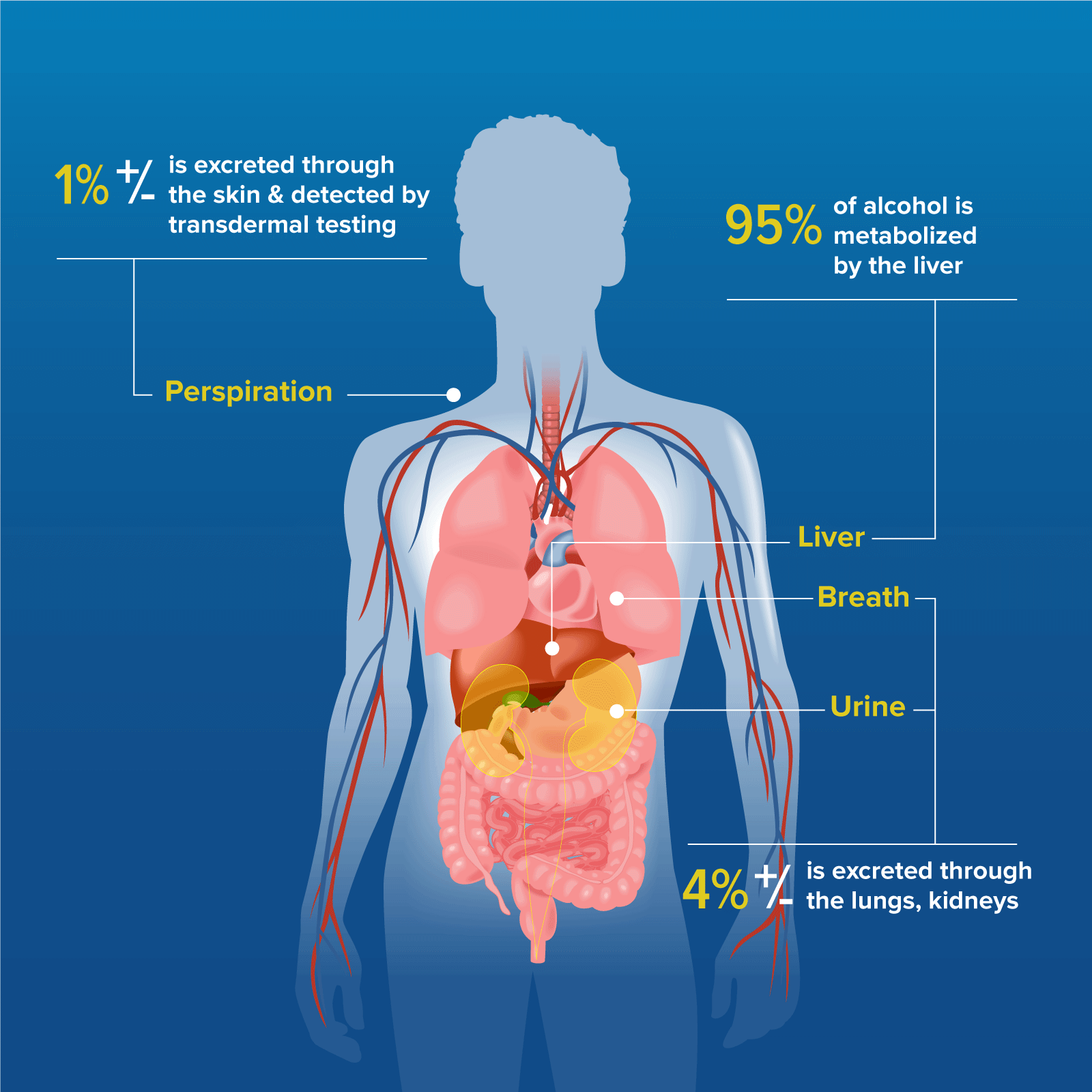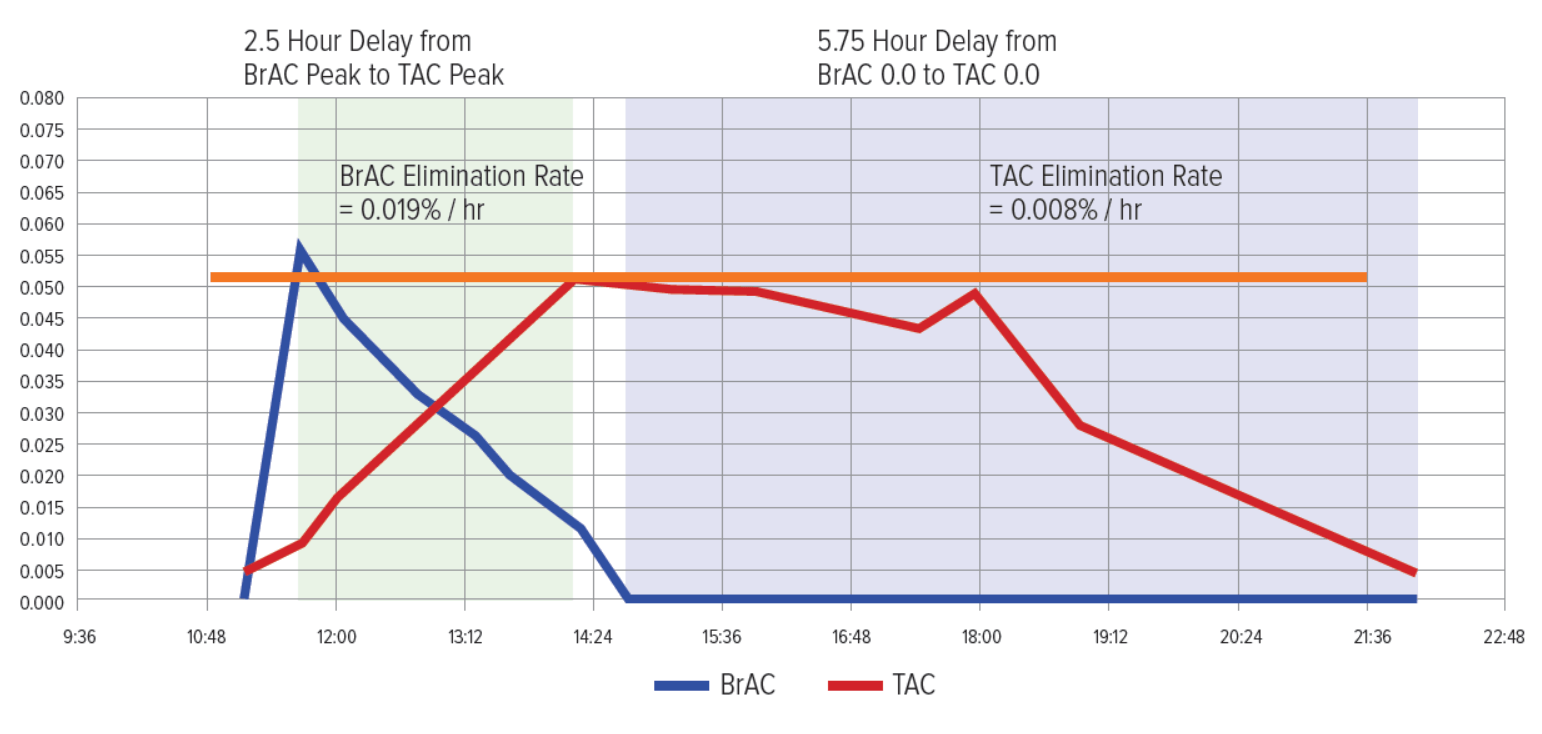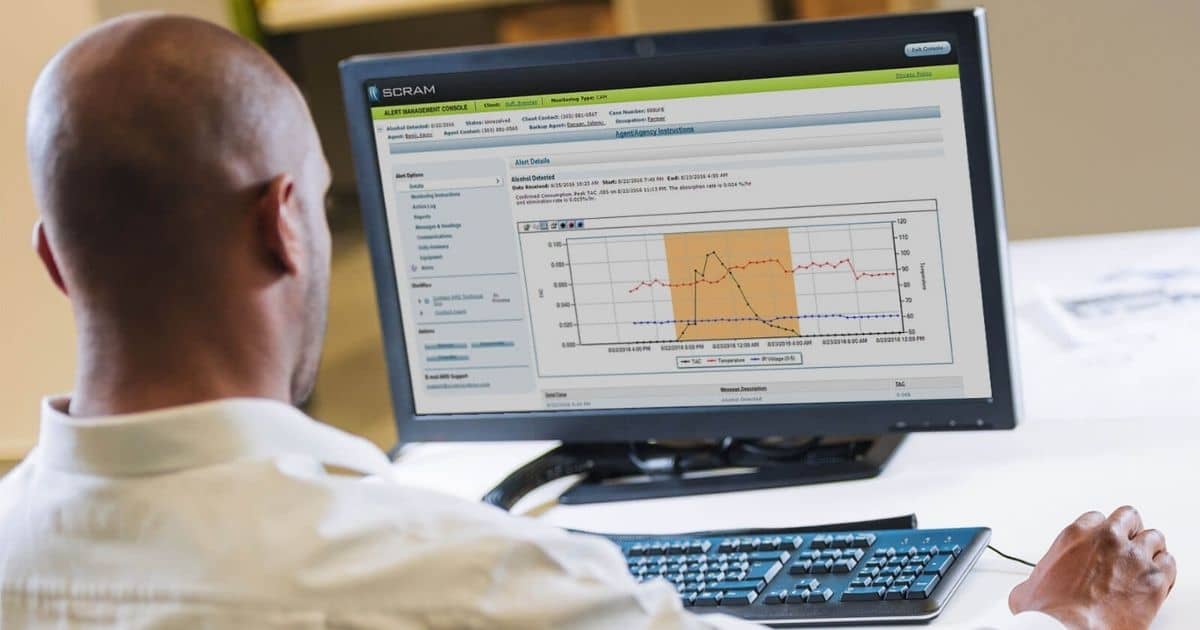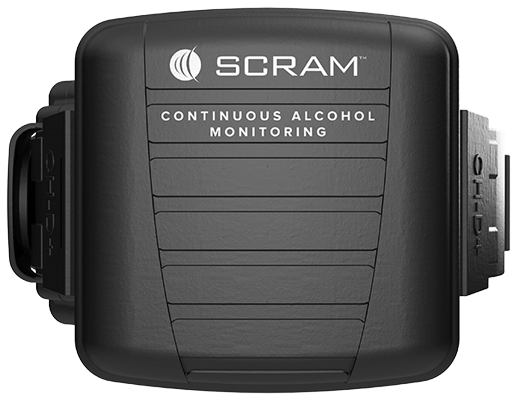Common methods of testing a person’s level of ingested alcohol include Blood Alcohol Concentration (BAC) and Breath Alcohol Concentration (BrAC). But alcohol concentration can also be measured transdermally—meaning “through the skin”—and is considered to be a reliable method to detect alcohol consumption.
The SCRAM Continuous Alcohol Monitoring® (SCRAM CAM®) bracelet is based on the science of transdermal testing and can measure the wearer’s Transdermal Alcohol Concentration (TAC) via insensible perspiration (sweat).
The Science of Transdermal Alcohol Testing
In the 1920s, researchers first began testing the concept of alcohol emissions through the skin. In 1985, researchers at the Indiana University School of Medicine published two studies on the subject of measuring volatile substances through the skin and measuring alcohol excretion in human perspiration. Today the science is well studied, documented, and peer-reviewed.
When ingested, alcohol first passes through the gastrointestinal system and then enters the bloodstream. As alcohol passes through the liver, about 95% of it is metabolized. The remaining alcohol is excreted through the kidneys, lungs, and skin and is detectable in urine, breath, and sweat. Breath alcohol detection devices detect BrAC in the air expulsed by the lungs, whereas transdermal devices, such as SCRAM CAM, detect Transdermal Alcohol Concentration (TAC) in otherwise undetectable vapors passed through the skin.

The SCRAM CAM bracelet continuously collects insensible perspiration coming from the wearer’s skin, and every thirty minutes it takes a TAC reading by running the contents of the collection chamber across an alcohol sensor.
TAC vs. BrAC Measurements
About 1% of consumed alcohol is lost through the skin as a gas. Transdermal alcohol sensing methods detect the gas phase of alcohol in the air just above the skin. The alcohol detected is measured as TAC that parallels the more familiar BrAC curves, but its curve is shifted later in time by 30 minutes to several hours.

TAC curves will rise and achieve their peak slower than BrAC curves and will remain elevated after BrAC has returned to zero. Because it takes more time for alcohol to diffuse from the bloodstream through the skin than it does through the lungs, TAC concentrations always lag behind real-time BrAC concentrations. This also means that while some clients may find ways to drink around their breath testing schedules, continuous transdermal alcohol monitoring is able to detect the entire alcohol event.
The Benefits of Continuous Transdermal Alcohol Monitoring
Transdermal alcohol monitoring is a reliable alcohol testing method, and when performed continuously with a device such as SCRAM CAM, it can eliminate testing gaps and encourage client accountability.
Continuous alcohol monitoring is proven to support long-term behavior change and complements treatment for alcohol dependence or addiction. SCRAM CAM not only supports sobriety but also results in higher compliance rates with court orders and increases community safety.


